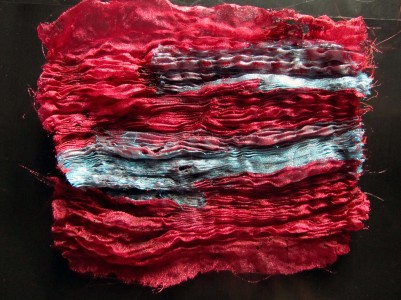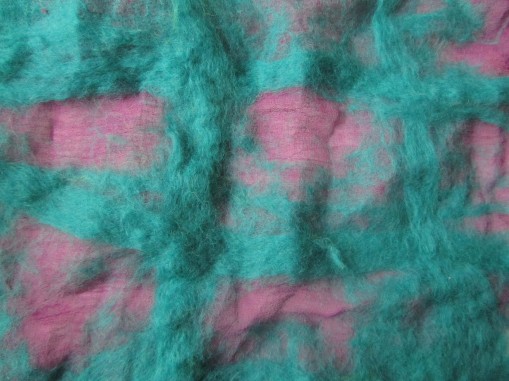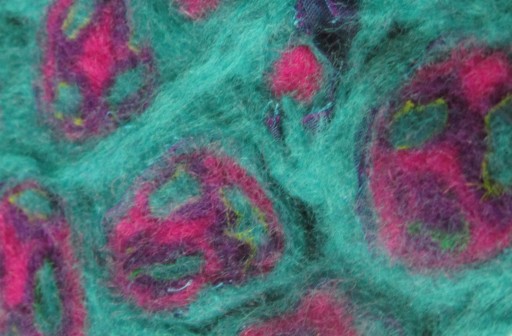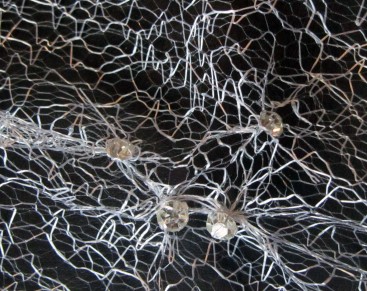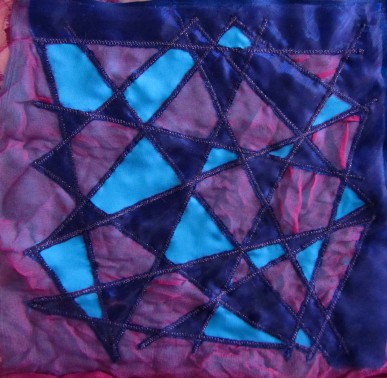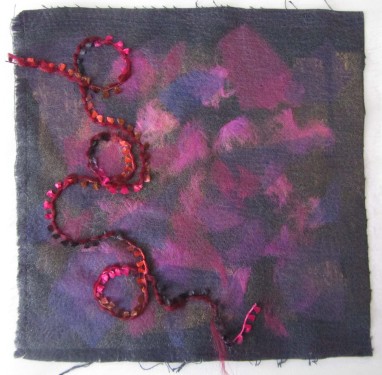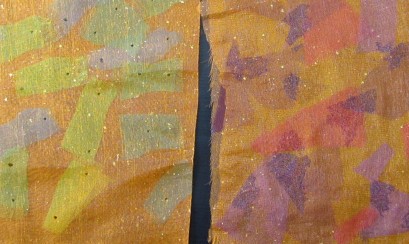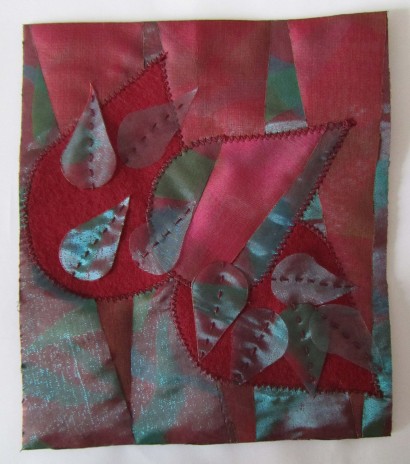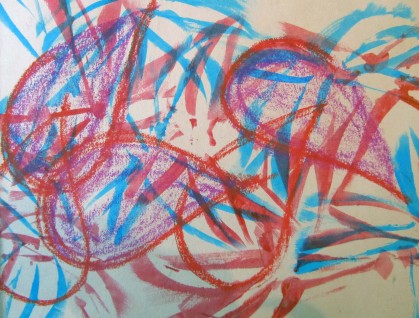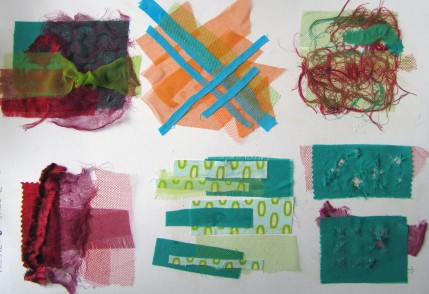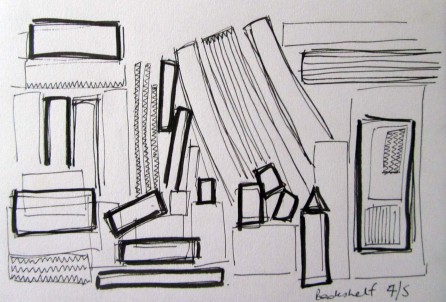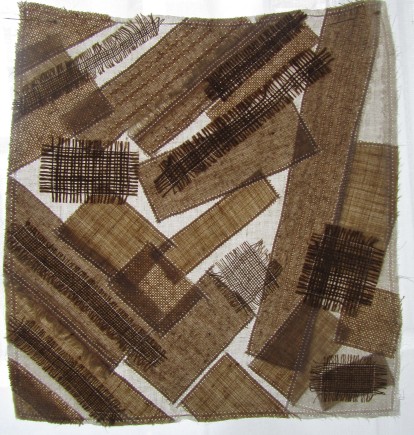I started this part of this project by reading “Textures Tucks and Pleats”, a self-published book by Jennie Rayment, 1996 bought by Mum at a workshop with the author. It was a good guide to the basic techniques whilst awaiting the arrival of “The Art of Manipulating Fabric” by Colette Wolff. I have worked with pleats, tucks and gathering in my dressmaking constructions, but hadn’t done anything purely decorative like this before. My initial practise pieces were on calico as below, and it was surprising how effective and impressive even a simple design can look.

I thought it would be interesting to see how pleats would look on this multicoloured woven stripe, and was really taken with the end result. It looked at it best when the pleats were ironed crisply before the final lines were sewn, and left unironed after that point. The samples are unfortunately getting a little squashed and distorted as they mount in number.

I did this ink sketch based on a photograph of an oil field in the Guardian Saturday magazine, and thought it would look good in tucks. I had to overcome the issue of tucks not traversing the whole sample, therefore needing balancing darts on the reverse. The sample was worked on calico, dyed with procion and ironed after rinsing whilst still damp. This allowed the fabric to settle out even flatter. I liked the effect on the colour, making it more uneven in texture. The tucks were brushed over lightly with an oil paintstick, and additional lines stitched over the top after fixing. This idea could be further developed by layering tucks and colour stages in turn.

Next up was quilting. I have never done any quilting, so used this piece to practise. Having read about Amish quilts, I decided to hand quilt a simple design with a bias binding edge. I like the American crazy quilts, particularly the uneven lines and busy colour themes. I thought that rather than using lots of small amounts of different colours, a small sample could be made to look busier by using very heavily patterned fabric in a restricted colour palette.

I have made some shirred samples, and found that parellel stitch lines, whether they are straight or wavy look similar once gathered, apart from the shape of the fabric at the bottom. The most interested results were obtained from opposing large zigzags as below.

Various fabrics torn into strips and gathered were appliqued in place to produce this sample. I found that the gathering thread should be of similar weight to the fabric or else it can snap at the gathering stage. Different effects could be acheived by twisting gathered strips before stitching the ends in place.

I tried trapping multiple strands of acrylic yarn between pieces of calico by stitching a line, pushing the yarn up to the stitch line, and sewing another line close to it. For the sample on the right I followed the same process, and then stitched a third piece of calico to the reverse, trapping yarn between the stitch lines in another direction.
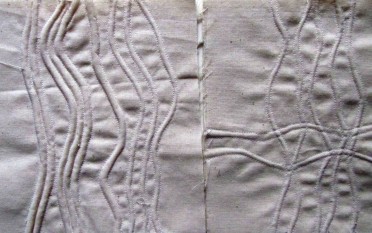
I am lucky enough to have access to a gathering machine I could borrow, which meant that I could practice traditional English smocking techniques with relative ease. The trick is to feed the fabric evenly into the machine without bunching, and using a lightweight fabric. One problem I found was that the needles left quite large holes in the fabric once the gathering threads were removed.

Firstly I tried smocking by hand with a contrasting thread and free wandering stitch lines and knots. I also tried machining over the gathered fabric, which has a lot of potential for textural pieces and would look good dyed. I found that shadows could be created by feeding the working thread in the ‘tubes’ formed on the reverse by the folds. On the right is a sample of North American style direct smocking. I marked the spots on the reverse using a quilting pen (marks removed with heat or friction) before working the designs. I liked the effect of combining English stitches with the thread on the right side with the American style of stitching from the reverse. I used the book “Smocking Design” by Jean Hodges, Batsford 1987 for inspiration as well as the Colette Wolff book for patterns.

Whilst using the gathering machine, I had the idea of feeding polyester organza scraps in a random and overlapping way to create a patchwork effect. Once on the gathering cotton thread, I then used a heat gun to distress the fabric, hold the pleats and bond the overlapping sections together. Once cool, the gathering threads were removed. I was really pleased and think that I would like to use this technique in the future as a basis for stitching.
